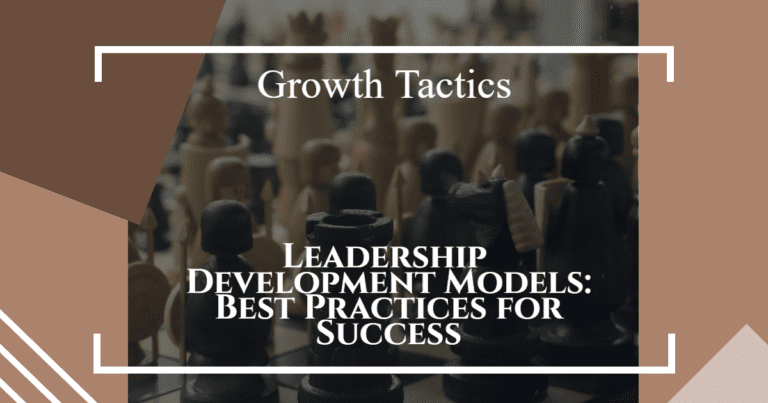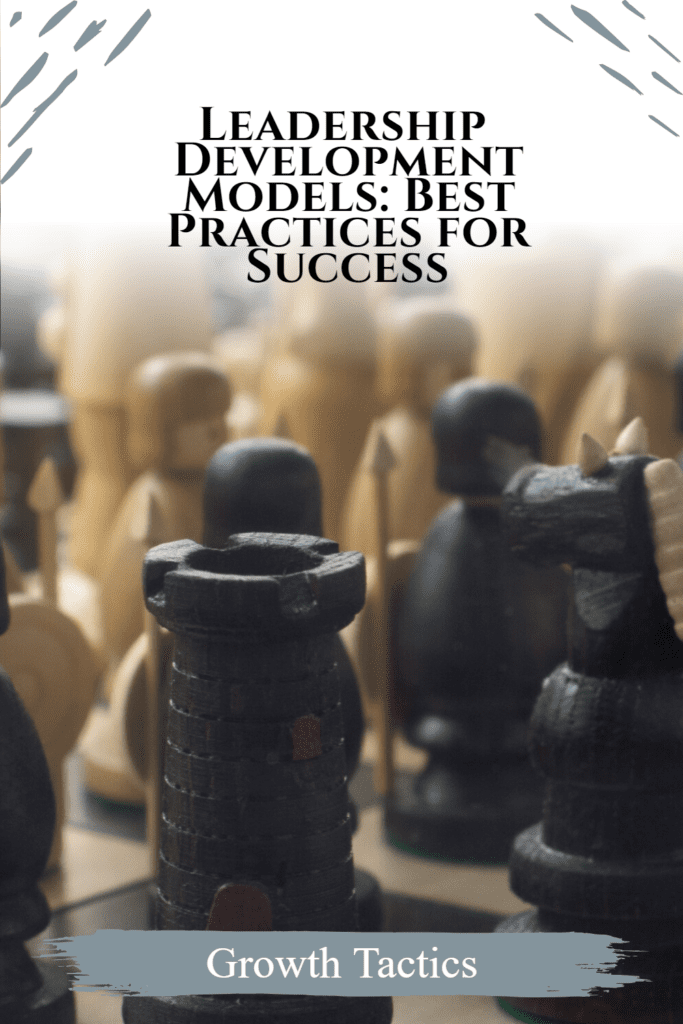Welcome to this article all about leadership development models. I’m here to provide you with some valuable insights that will help you in your journey to become a better leader or teach leadership to others.
Jump To Section
Understanding Leadership Development Models
Let’s start by defining what a leadership development model is. Basically, it’s a framework that guides individuals and organizations in building and enhancing their leadership capabilities. It serves as a roadmap for developing the right leadership style, competencies, and skills that align with industry trends and organizational goals.
Traditional Leadership Development Models vs. the New Approach
Traditionally, leadership development models have relied heavily on classroom-based training, focusing on theoretical knowledge and skills. While these models have their merits, they often fall short when it comes to practical application and real-world impact.
However, there’s a new and innovative approach to leadership development that we’re going to explore together. This model takes a different approach by recognizing the importance of hands-on learning, feedback, and interaction. It creates an environment that nurtures leaders to grow and succeed.
This model embraces the 70-20-10 principle, which suggests that 70% of learning happens through on-the-job experiences, 20% through interactions with others, and 10% through formal training initiatives. It’s all about learning by doing and learning from others.
Implementing the New Leadership Development Model
Now, let’s dive into the key factors and strategies for successfully implementing this new leadership development model:
Reflect on Individual and Team Leadership Capabilities
Before jumping into any leadership development program, it’s important to reflect on the current leadership capabilities of both individuals and the team as a whole. This reflection helps identify strengths, weaknesses, and areas of improvement. It sets the foundation for growth and development.
Align the Right Leadership Style
Different situations call for different leadership styles. When implementing the new model, it’s crucial to align the right leadership style with the organization’s goals and the team’s needs. This ensures that leaders can effectively motivate and empower their team members. It’s all about finding the right fit.
Foster a Culture of Feedback and Interaction
Effective leaders understand the value of feedback. In the new leadership development model, organizations should foster a culture of open communication and feedback. Leaders should be encouraged to provide regular feedback and opportunities for interaction and collaboration among team members. It’s all about creating a supportive environment where everyone’s voice is heard.
Focus on Outcomes and Success
In the new model, the focus shifts from just completing a training program to achieving outcomes and success. Leaders are encouraged to set specific goals, measure their progress, and evaluate the impact of their actions on the organization’s success. It’s about results and driving progress.
Offer Engaging Leadership Development Training
To support the implementation of the new model, organizations should offer engaging leadership development training programs. These programs should be a mix of formal training, interactive workshops, coaching sessions, and mentorship opportunities.
This multifaceted approach ensures that leaders can develop the necessary knowledge and skills while also receiving valuable support and guidance. It’s all about providing an engaging and comprehensive learning experience.
Empower Leaders to Adapt to an Ever-Changing Business Environment
In today’s fast-paced business environment, leaders need to be adaptable and open to change. The new leadership development model emphasizes the importance of helping leaders develop a growth mindset and the ability to adapt to new technologies, market trends, and organizational changes. It’s about being agile and staying ahead of the curve.
Utilize Technology for Observing and Modeling Leadership Behavior
Technology can play a significant role in leadership development. By leveraging tools like video recording and analysis software, leaders can observe and reflect on their own behavior, identify areas for improvement, and model successful leadership practices. It’s all about using technology to enhance self-awareness and growth.
Enable Collaborative Learning
Collaborative learning is a powerful tool for leadership development. Organizations should create opportunities for leaders to learn from each other through group projects, cross-functional initiatives, and knowledge-sharing sessions.
This collaborative environment fosters creativity, innovation, and the exchange of best practices. It’s all about learning from each other and leveraging the collective wisdom.
Reinforce Learning Through Organizational Support
To ensure the sustainability of the new leadership development model, organizational support is crucial. Leaders should be given the resources, time, and autonomy to apply their newly acquired knowledge and skills in the workplace.
This support reinforces learning and improves performance at both the individual and team levels. It’s about creating an environment that supports growth and development.
The Benefits of the New Leadership Development Model
Implementing the new leadership development model offers several benefits:
Enhanced Leadership Capabilities: The model helps leaders develop the right competencies and skills required to excel in their roles.
Increased Productivity: Effective leadership fosters a productive work environment, leading to improved efficiency and overall productivity.
Adaptability to Change: Leaders equipped with the new leadership development model can navigate and adapt to the ever-changing business landscape.
Retention of Top Talent: When organizations invest in leadership development, it demonstrates their commitment to growth and development, increasing employee retention.
Support for Decision-Making: Leaders with a solid leadership development foundation can make informed decisions that drive success and innovation.
People-Focused Approach: The new model fosters a people-focused approach, creating a supportive and engaging work environment.
Tools for Leadership Development: Empowering Leaders to Succeed
I understand the importance of having the right tools to empower leaders to succeed. In this section, I want to share with you some of the most effective tools that can be used in a leadership development model. So let’s dive right in and explore these tools together!
1. Self-Assessment Tools: Uncover Your Leadership Potential
Self-assessment tools are a great starting point for any leadership development program. These tools help individuals gain insight into their strengths and areas for improvement, enabling them to understand themselves better as leaders. Some popular self-assessment tools include personality assessments, emotional intelligence tests, and leadership style assessments.
2. Feedback Instruments: Constructive Feedback for Growth
Constructive feedback is an essential aspect of leadership development. Feedback instruments, such as 360-degree feedback surveys, allow leaders to receive feedback from their peers, subordinates, and superiors. This valuable input helps leaders identify their blind spots, understand how others perceive their leadership style, and make necessary improvements.
3. Coaching and Mentoring: Personalized Guidance for Success
Coaching and mentoring are powerful tools that provide leaders with personalized guidance and support. A skilled coach or mentor can help leaders identify their goals, develop their skills, and navigate challenges. Whether it’s one-on-one coaching sessions or group mentoring programs, these tools offer leaders the opportunity to grow and excel in their roles.
4. Leadership Workshops and Training Programs: Enhancing Skills and Knowledge
Leadership workshops and training programs are an excellent way to enhance leadership skills and knowledge. These interactive sessions provide leaders with the opportunity to learn new techniques, explore best practices, and develop specific leadership competencies. From communication and decision-making to strategic thinking and team building, these programs offer a comprehensive learning experience.
5. Action Learning Projects: Applying Skills in Real-Life Scenarios
Action learning projects are hands-on experiences that allow leaders to apply their skills and knowledge in real-life scenarios. These projects typically involve solving complex problems, leading a team, or spearheading initiatives within their organization. By undertaking these projects, leaders gain practical experience, learn from their successes and failures, and develop valuable leadership capabilities.
6. Leadership Books and Resources: Continuous Learning for Growth
Reading books and exploring various leadership resources is a continuous learning journey that every leader should embark on.
There are countless books written by experts in the field of leadership that offer insights, strategies, and inspiration. From classic titles like “The Leadership Challenge” by James Kouzes and Barry Posner to newer releases, these resources provide valuable knowledge and keep leaders motivated on their development journey.
Conclusion
To wrap things up, implementing a new leadership development model is essential to empower leaders and achieve success in today’s business environment. By incorporating hands-on learning, feedback, and collaboration, organizations can breed effective leaders equipped with the right competencies and skills to drive their teams and organizations forward.
The new leadership development model aligns with industry trends and offers a strategic approach to leadership development, ensuring positive outcomes and long-term success. It’s all about investing in leadership development and creating a culture of growth.


